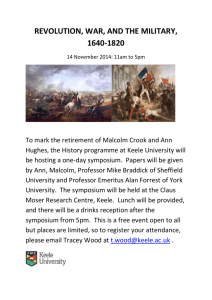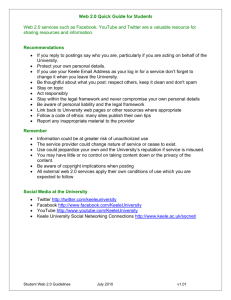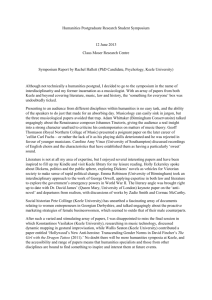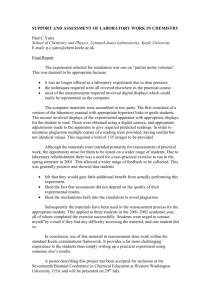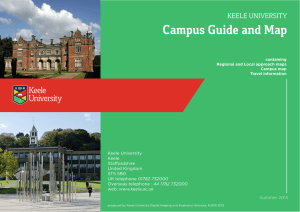Keele University Computer-based Test Abstract Interview with Doug Quinney
advertisement
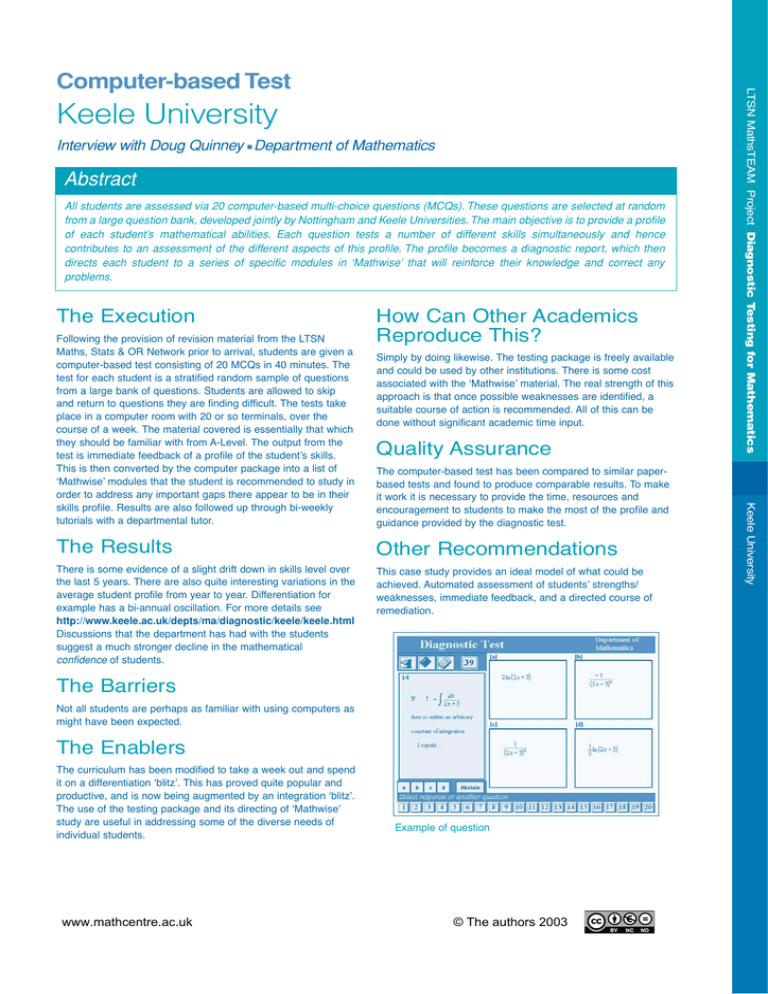
Keele University Interview with Doug Quinney ■ Department of Mathematics Abstract All students are assessed via 20 computer-based multi-choice questions (MCQs). These questions are selected at random from a large question bank, developed jointly by Nottingham and Keele Universities. The main objective is to provide a profile of each student’s mathematical abilities. Each question tests a number of different skills simultaneously and hence contributes to an assessment of the different aspects of this profile. The profile becomes a diagnostic report, which then directs each student to a series of specific modules in ‘Mathwise’ that will reinforce their knowledge and correct any problems. The Execution Simply by doing likewise. The testing package is freely available and could be used by other institutions. There is some cost associated with the ‘Mathwise’ material. The real strength of this approach is that once possible weaknesses are identified, a suitable course of action is recommended. All of this can be done without significant academic time input. Quality Assurance The computer-based test has been compared to similar paperbased tests and found to produce comparable results. To make it work it is necessary to provide the time, resources and encouragement to students to make the most of the profile and guidance provided by the diagnostic test. The Results Other Recommendations There is some evidence of a slight drift down in skills level over the last 5 years. There are also quite interesting variations in the average student profile from year to year. Differentiation for example has a bi-annual oscillation. For more details see http://www.keele.ac.uk/depts/ma/diagnostic/keele/keele.html Discussions that the department has had with the students suggest a much stronger decline in the mathematical confidence of students. This case study provides an ideal model of what could be achieved. Automated assessment of students’ strengths/ weaknesses, immediate feedback, and a directed course of remediation. The Barriers Not all students are perhaps as familiar with using computers as might have been expected. The Enablers The curriculum has been modified to take a week out and spend it on a differentiation ‘blitz’. This has proved quite popular and productive, and is now being augmented by an integration ‘blitz’. The use of the testing package and its directing of ‘Mathwise’ study are useful in addressing some of the diverse needs of individual students. www.mathcentre.ac.uk Example of question © The authors 2003 Keele University Following the provision of revision material from the LTSN Maths, Stats & OR Network prior to arrival, students are given a computer-based test consisting of 20 MCQs in 40 minutes. The test for each student is a stratified random sample of questions from a large bank of questions. Students are allowed to skip and return to questions they are finding difficult. The tests take place in a computer room with 20 or so terminals, over the course of a week. The material covered is essentially that which they should be familiar with from A-Level. The output from the test is immediate feedback of a profile of the student’s skills. This is then converted by the computer package into a list of ‘Mathwise’ modules that the student is recommended to study in order to address any important gaps there appear to be in their skills profile. Results are also followed up through bi-weekly tutorials with a departmental tutor. How Can Other Academics Reproduce This? LTSN MathsTEAM Project Diagnostic Testing for Mathematics Computer-based Test
